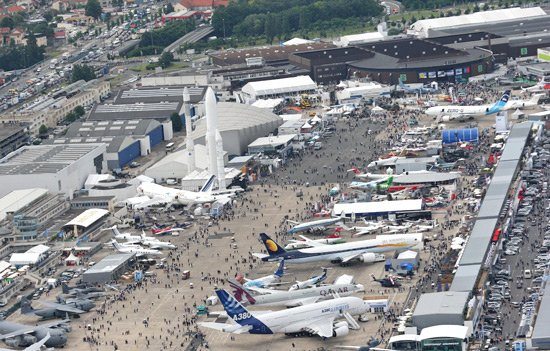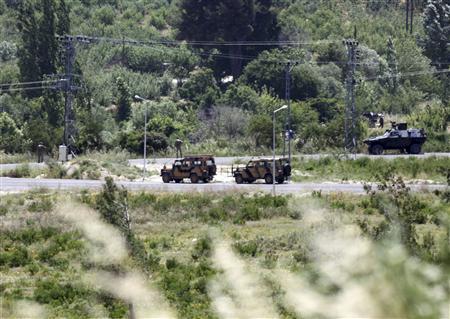The world’s planemakers set out their stalls alongside an airfield outside Paris on Monday hoping the biggest event in the aviation calendar will confirm their industry is again ready for takeoff.
Dueling giants Boeing and Airbus, alongside around 2,000 smaller aerospace suppliers, come to the first Paris International Airshow since the end of the global financial crisis eying possible massive new airline orders.
French-based Airbus, the main subsidiary of European high-tech giant EADS, is on home turf and flying high on the back of Asian orders for its new fuel efficient A320 Neo worth more than $10 billion.
But US behemoth Boeing is bound to come back fighting, and in terms of symbolism, the initial omens did not bode well for Airbus as the firms prepared for a week of razzmatazz around the Le Bourget runway.
One of the firm’s flagship A380 superjumbos clipped a structure by the taxiway on arrival and lost a wing-tip, ruling it out of the thundering flight demonstrations that will split the suburban skies here all week.
Meanwhile, Airbus’ long-troubled and much delayed A400M military transport was also grounded with engine problems and the company confirmed that delivery of two versions of its key A350 longhaul airliner would be delayed.
Boeing, by contrast, successfully brought along its 747-8 Intercontinental, allowing the longer, modernized version of its trademark jumbo jet to make its international debut in great style on its rival’s doorstep.
In recent years, the fast-growing emerging economies of Asia have helped keep plane sales buoyant amid gloom in Western markets, but on the eve of the show Boeing admitted it expects China to become a rival as well as a client.
“They are improving all the time … making huge investments,” said Jim Albaugh, head of Boeing’s commercial aircraft operations, saying Chinese aerospace firms would win sales “probably sooner than anyone thinks.”
Commercial Aircraft Corp of China (Comac) is making its first appearance in Paris, with a mock-up of the cockpit and fuselage of its C919, which targets the medium-haul market dominated by Boeing’s B737 and Airbus’ A320.
Alternating year-by-year with Britain’s Farnborough, the Le Bourget aviation show is the industry’s showpiece event, starting Monday with trade days for the industry and opening its doors to the public on Friday.
The business side of the event will be dominated by commercial aviation — the military market being depressed by government spending cutbacks — but the scientific star of the show will be a unique solar-powered plane.
As big as an airliner with its 63 metre wingspan but as light, at 1,600 kilos, as a family car, the Solar Impulse will demonstrate the future of aviation with daily flights, weather permitting, around the site.
Its electric propellers are powered only by solar panels and the team hopes that they can fly the craft all the way around the world to demonstrate their revolutionary technology to industry leaders.
Still more ambitious, but still on the drawing board, EADS will show off plans for a rocket-powered space plane capable of taking 100 passengers from Paris to Tokyo in two-and-a-half environmentally friendly hours.
The “Zero Emission Hypersonic Transportation” (Zehst) will take off using normal engines powered by biofuel made from seaweed before firing up its rocket engines on the edge of space at 32,000 metres.
The rocket engines will be powered by hydrogen and oxygen whose only exhaust is water vapour. “You don’t pollute, you’re in the stratosphere,” EADS’ chief technical officer Jean Botti said.
EADS hopes to have a prototype by 2020 and for the plane to enter commercial service around 2050.










